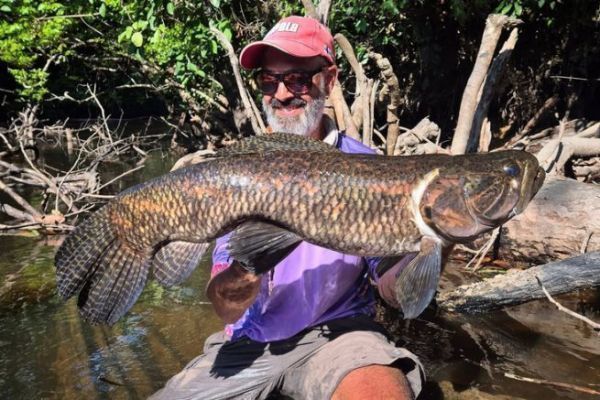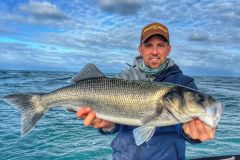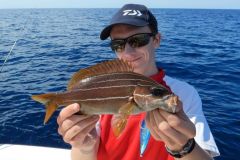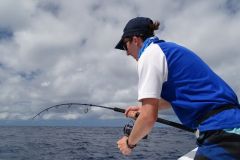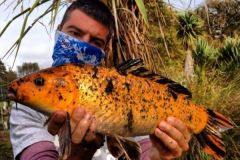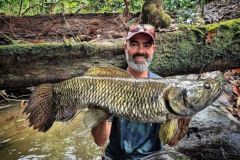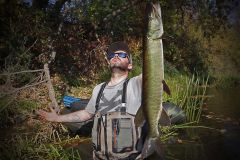Rod and reel sets: no compromises
Let's start with rods and reels. It's not advisable to have several sets mounted in kayaks to limit the risk of breakage and loss, especially when the kayak gets caught in branches. You think about protecting your face, but you don't think about the rod that drags along and gets picked up by a branch that's stronger than expected. The groove folds, folds and...cracks! Game over. Even so, it's absolutely essential to have one or two spare rods.
Opting for travel rods makes sense. Stored in a small PVC tube, they'll be safe and ready to play their part if need be. As for reels, having two or even three is not necessarily a luxury. On this trip, I used a Smith Koz Husky Magnum 65LH rod as a holder, combined with an Abu Garcia Revo beast reel. It's an absolutely perfect rod for fighting these fish. I had a lot of fun with it and it never failed me, so much so that I didn't have to take out my Iron Man The THRONE PE 3-6 as a back-up. As for the reel, it has all the qualities needed to block the river's big specimens.
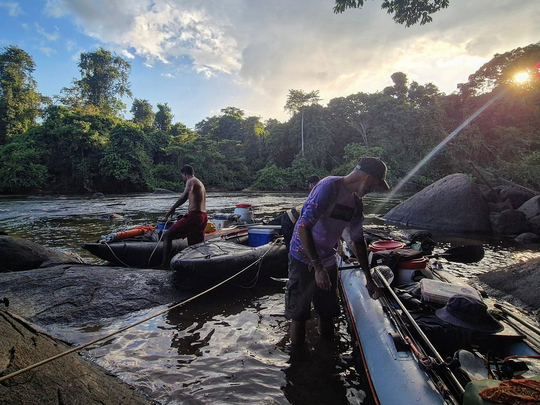
Your reels will be spooled with 70 to 80 lbs braid, to which you will add a good metre of shock leader (fluoro to be avoided) in 0.80 to 1 mm. More supple, it will limit the number of stalls these fish make during fights. This leader is only there for friction in obstacles. It's compulsory to add a steel leader between 65 and 80 lbs, sleeved, about 20 to 30 cm long, with welded rings at each end. Here again, there's no guarantee that you won't get cut, but it's a good way to limit your fishing. These fish have incredible power in their jaws. Some stainless steel leaders from Caperlan do the job perfectly. A welded ring for the junction with the shock leader and one to receive a broken ring on which to mount your lures. It's not too much to expect to be able to make 2 to 3 leaders a day for yourself. For each leader, you'll need 4 sleeves and two soldered rings. The rod is ready. Let's move on to lures.
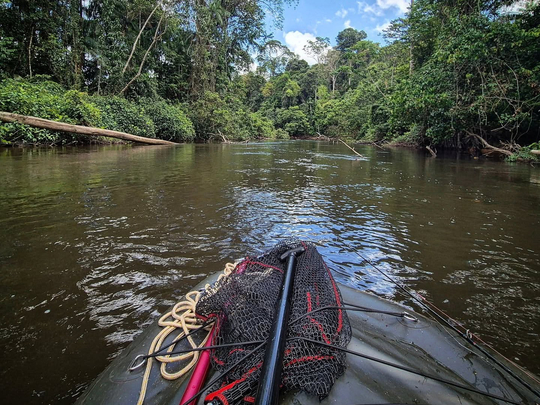
A variety of pleasures
There are several groups of lures that can be used to fish all the configurations you'll encounter. As a general rule, lures should be rigged with 4x reinforced hooks, size 1/0 to 3/0, with the appropriate split rings. On some lures, a single 3/0 hook in the tail will prove more effective, while on others you'll need to adapt the sizes to keep the two trebles without impacting the swim. The use of single hooks, in sizes 5/0 to 6/0 with a large gap, can be very interesting and can sometimes limit stalls. Sometimes only...

The first group is certainly the one that made the predator's reputation: top water. It's therefore inconceivable to leave without a good old search bull, a real magnet for aimara, a few 130 or 190 mm whopper ploppers, and other poppers and stickbaits. At the end of the day, these lures will make a killing. Buzzbaits also work very well.
The second is jerkbaits and minnow jerkbaits. A good old buster jerk, a glide hustler or a BKS kten 140 will work wonders in less crowded areas, such as sandbanks or shallow areas. Big fish can hold their own in just 40 to 50 cm of water. Fluorescent colors work very well (FT, parrot, orange, pink). Don't hesitate to use flashy colors (gold, silver) for areas well exposed to the sun.
The third group, certainly one of the most effective and easiest to use, is represented by spinnerbaits and chatterbaits. These lures, which combine flash and vibration, work in almost any configuration. Don't hesitate to use a good number of them. Ideally, they should be Texan-rigged, size 8/0 to 12/0, so you can also use them for pulling through obstacles. Make sure you have plenty of soft lures to make them more attractive. Beware, if the LS are not in TPE, it's often just a touch, a lure. Don't hesitate to use color palettes, such as orange Colorados, to make them even more effective. They should weigh between 30 and 60 grams.

A few tips...
Then there are a lot of little things that can come in handy. One or two tubes of super glue, mandatory, to repair punctured lures. A bit of twig after you've drained the water, a swipe of super glue, and off you go again...for a few casts. Every evening, we carried out repairs of this kind. Leaded Texas hooks, for soft lure fishing in obstacles, with big grubs or double tails, additional paddles... Everything you need to customize your lures according to your observations.
Of course, don't forget your longnose pliers, Boga-type fish grip or Rapala-type plastic pliers (or both, as it's a good idea to hold both jaws before sliding the paw into the wolf trap). All this with lanyards, ideally, to attach them to the kayak. Scissors, a hook sharpener, a knife of course, and bolt cutters to deal with any situation.

Now you're ready for a confrontation.

 /
/ 